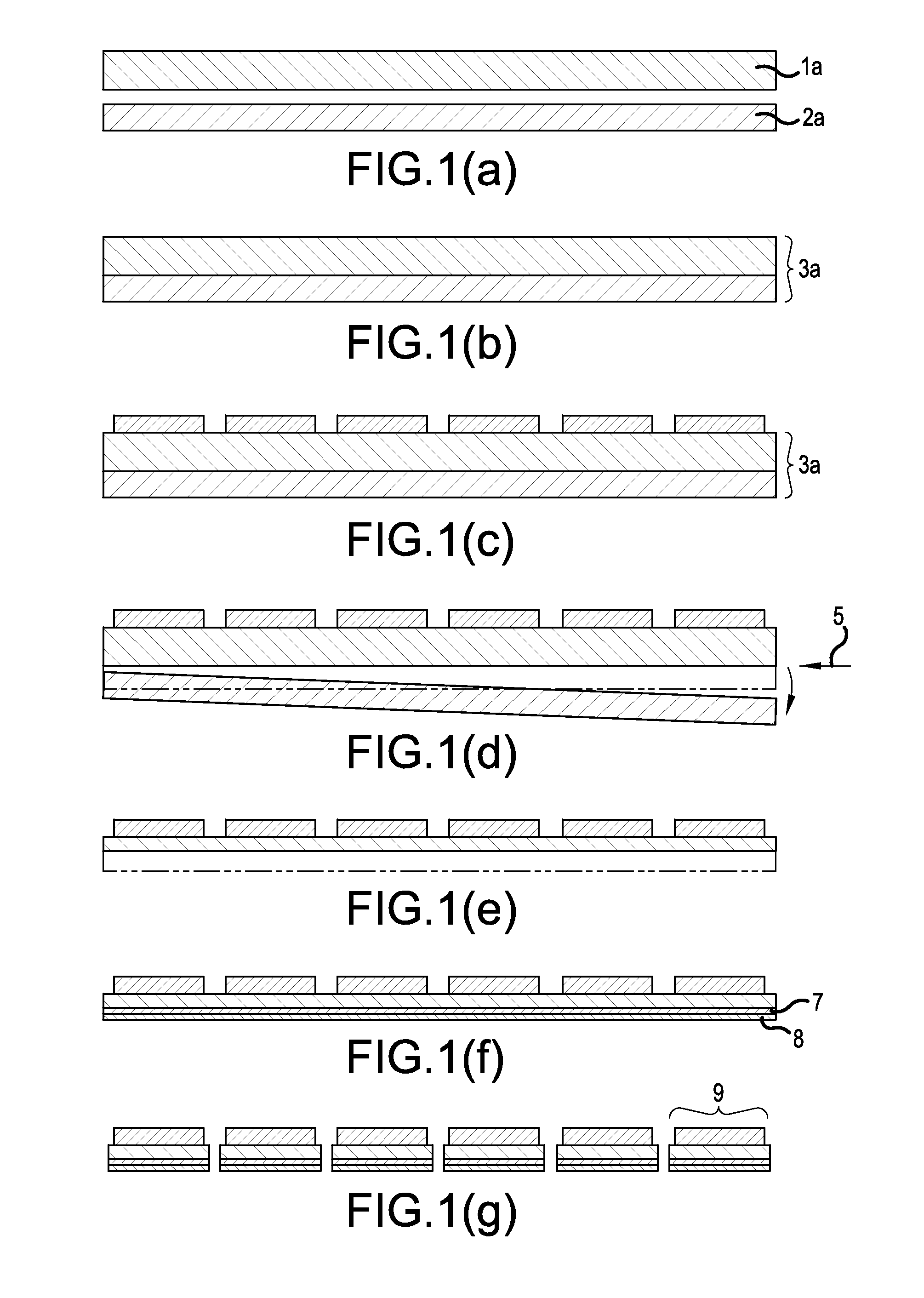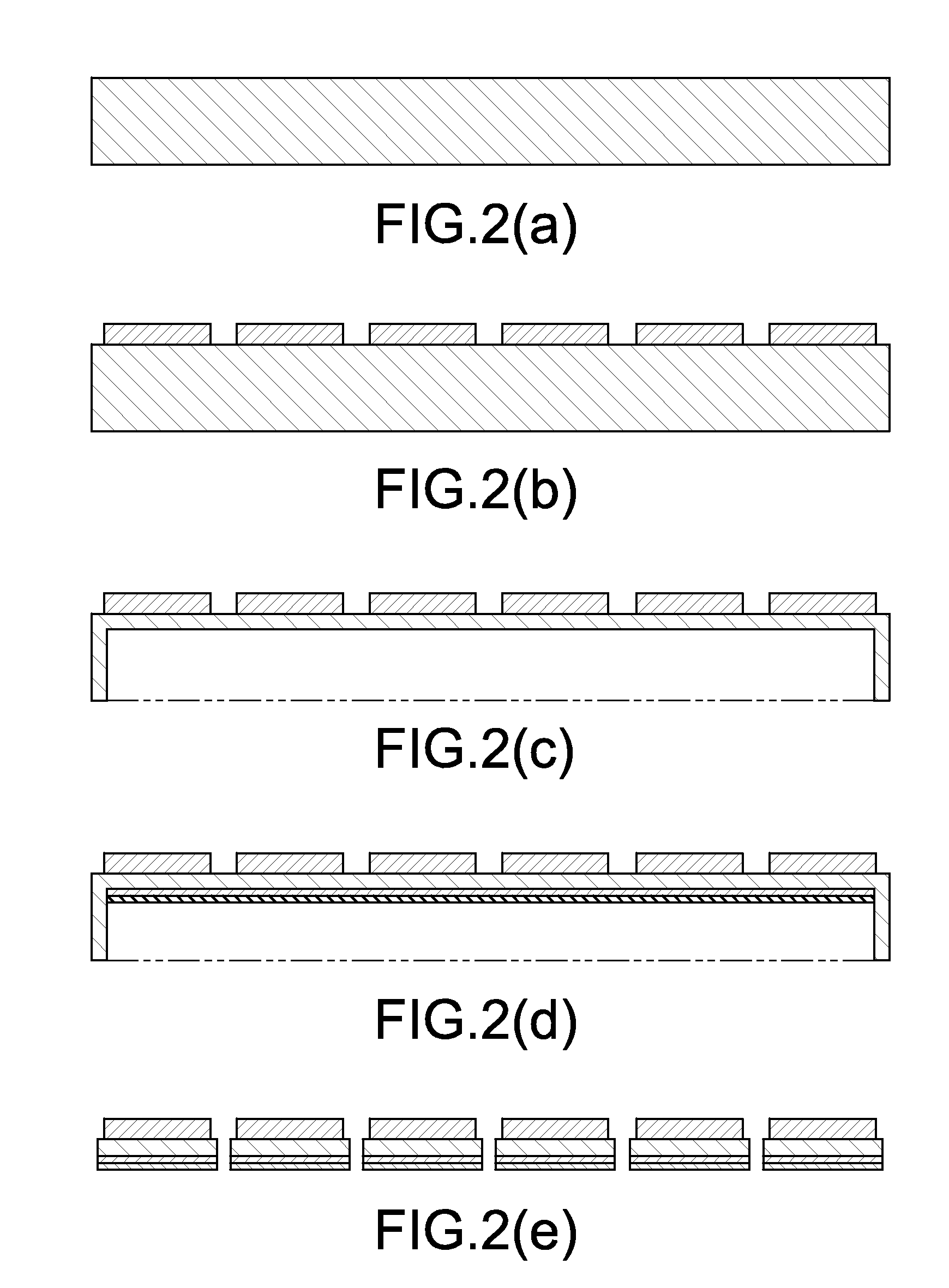Method for separating support substrate from solid-phase bonded wafer and method for manufacturing semiconductor device
a technology of solid-phase bonding and support substrate, which is applied in the direction of transistors, electrical equipment, basic electric elements, etc., can solve the problems of increasing the cost of silicon wafer, increasing the cracking or the like of the wafer, and reducing the efficiency of silicon dust recycling, so as to achieve the effect of reducing the cost of wafer and separating the support substra
- Summary
- Abstract
- Description
- Claims
- Application Information
AI Technical Summary
Benefits of technology
Problems solved by technology
Method used
Image
Examples
example 1
[0057 of the method for manufacturing a semiconductor device using the method for separating a support substrate from a solid-phase bonded wafer according to the invention will be described in detail with reference FIG. 1. FIG. 1 includes sectional views, all of which show wafers. CZ-p type Si support wafer 2a having a diameter of 8 inches and a thickness of 300 μm is prepared as a support substrate for FZ-n type Si wafer 1a having the same diameter and a thickness less than 400 μm (FIG. 1(a)). Here, Si wafer 1b with a thickness of 100 μm and support wafer 2b with a thickness of 700 μm may be prepared alternatively, as shown in FIG. 4(a). In FIG. 4, Si solid-phase bonded wafer 3b is used. In Si solid-phase bonded wafer 3b, Si wafer 1b having a thickness of 100 μm substantially corresponding to the thickness of a finished wafer and support wafer 2b having a thickness of 700 μm are bonded to each other by solid-phase bonding. Accordingly, the method in FIG. 4 is the same as the method...
PUM
 Login to View More
Login to View More Abstract
Description
Claims
Application Information
 Login to View More
Login to View More - R&D
- Intellectual Property
- Life Sciences
- Materials
- Tech Scout
- Unparalleled Data Quality
- Higher Quality Content
- 60% Fewer Hallucinations
Browse by: Latest US Patents, China's latest patents, Technical Efficacy Thesaurus, Application Domain, Technology Topic, Popular Technical Reports.
© 2025 PatSnap. All rights reserved.Legal|Privacy policy|Modern Slavery Act Transparency Statement|Sitemap|About US| Contact US: help@patsnap.com



